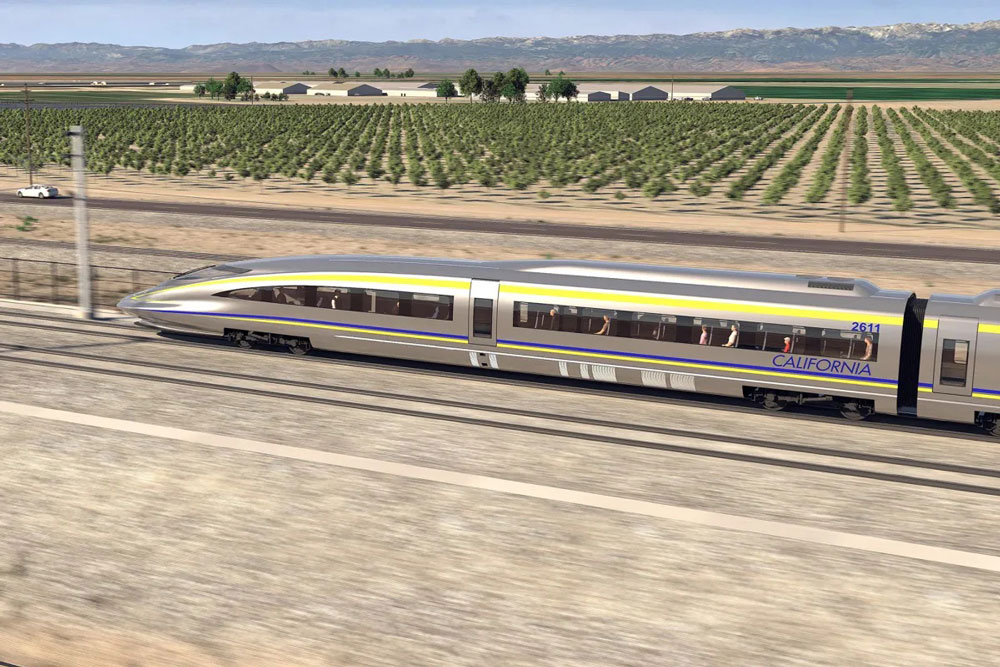
SACRAMENTO, Calif. – California Gov. Gavin Newsom is deadlocked in a dispute with Democratic colleagues in the state House over the next steps in the future of the state’s $105 billion high speed rail project, according to CalMatters, an online, nonprofit news agency that covers public policy in the Golden State.
The California High-Speed Rail Authority’s vision is to build the nation’s first 220-mph passenger railroad, connecting San Francisco with Los Angeles via the Central Valley, with eventual build-out to an 800-mile system reaching Sacramento and San Diego.
Already, the state has spent more than $10 billion on what the news agency characterizes as “the largest single investment in state history, the most ambitious civil works effort in the nation and now a symbol to many experts of how not to build a railroad.”
At issue is Newsom’s 2021 request for legislators to approve a $4.2 billion appropriation, the last remaining amount from a 2008 bond measure authorizing the project. CalMatters staff writer Ralph Vartabedian describes the standoff this way: “The battle involves who will exert control over the project’s future, how to improve its efficiency, and how the remaining funds can yield the greatest benefits, which involve sharp disagreements that could be difficult to resolve.”
Construction, land acquisition, and planning are underway for a 171-mile middle section of the San Francisco-Los Angeles route lying between Merced on the north and Bakersfield on the south. Currently, 119 miles of the line are under contract, but further progress has been impeded by utility relocation and property issues.
A recent CHSRA report says that 57% of 1,850 utility relocations remain uncompleted, 10 years after construction began. In addition, the agency still needs to acquire 222 land parcels out of a total of 2,291, and only 22 of 66 structures have been completed.
When proposed in 2008, the system was originally projected to cost $33 billion and open in 2020. Democratic House Speaker Anthony Rendon of Los Angeles said: “There is no confidence in the project. We had an end date of 2020 and now we don’t have an end date.”
Legislators last year proposed a “recalibration” of the project that would substitute 170-mph battery-powered trains on the middle section of the route and delay electrification until the line reaches one of the endpoints. Critics of that plan say battery-powered technology is unproven to reach true HSR performance speeds.
In addition, legislators last fall offered Newsom $2.5 billion for construction and cost overruns, in exchange for an increase in high speed rail segments in Southern California and an improved plan to connect the Central Valley segment to the San Francisco Bay Area. No progress has taken place on this proposal.
“Given the political divisions, the cost growth, the schedule delays, and the lack of a sound future revenue source, this project is going to the graveyard of famous boondoggles,” said Bent Flyvbjerg, a business expert at the University of Oxford’s Saïd Business School and IT University of Copenhagen.
Supporters disagree. The report quotes former U.S. Transportation Secretary Ray LaHood as saying: “There’s construction under way. Hundreds of people are working on the project and have good paying jobs. There’s a plan now to go to Bakersfield. The future is very encouraging. It hasn’t stopped. The naysayers are always going to be naysayers.”
CalMatters’ report notes that CHSRA’s need for the $4.2 billion Newsom requested is not apparent, as the agency has nearly half that much cash on hand, which could keep the project moving ahead for at least a year. CHRSA’s CEO Brian P. Kelly counters that the appropriation is needed to enable stable planning and to proceed with orderly purchases of trainsets, construction of which requires a long lead time.
The overarching issue seems to be that as cost overruns grow, the state may be unable to complete the 171-mile line to Los Angeles and San Francisco. On the north, completing the connection to the Bay Area could cost $22 billion, while the connection from Bakersfield to LA could cost $50 billion. Legislators “are worried that the 171-mile system would remain isolated,” CalMatters reported, quoting one assembly member as saying: “The idea that you would spend all your money on a train that doesn’t connect to anything and just hope that you’re going to get more money, I find a really frightening business proposition.”






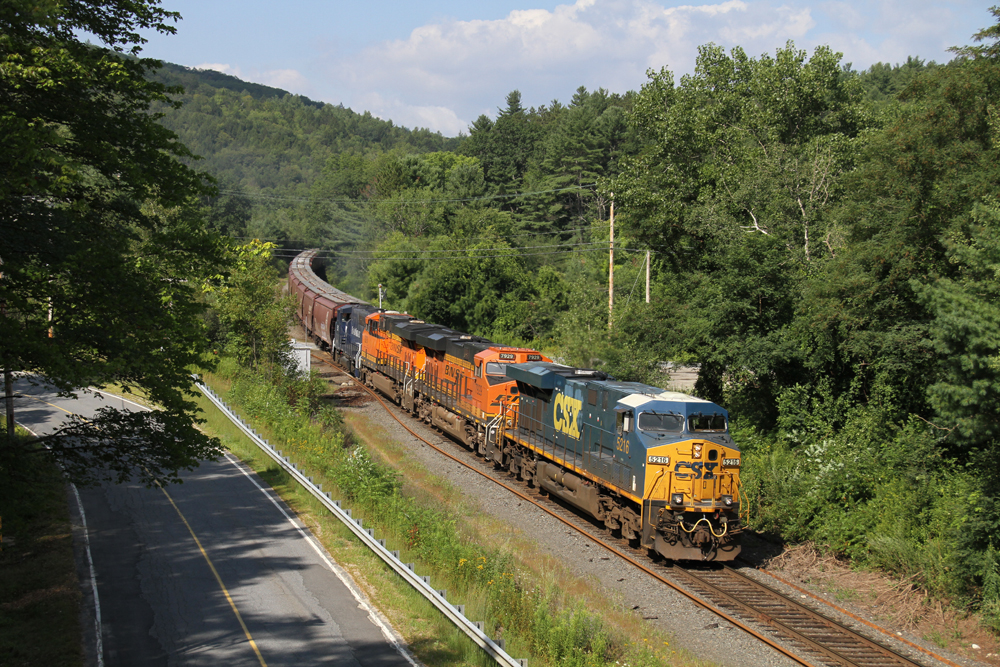
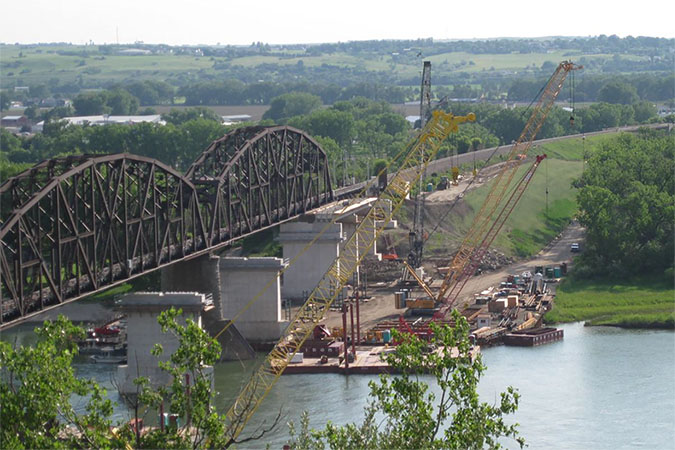
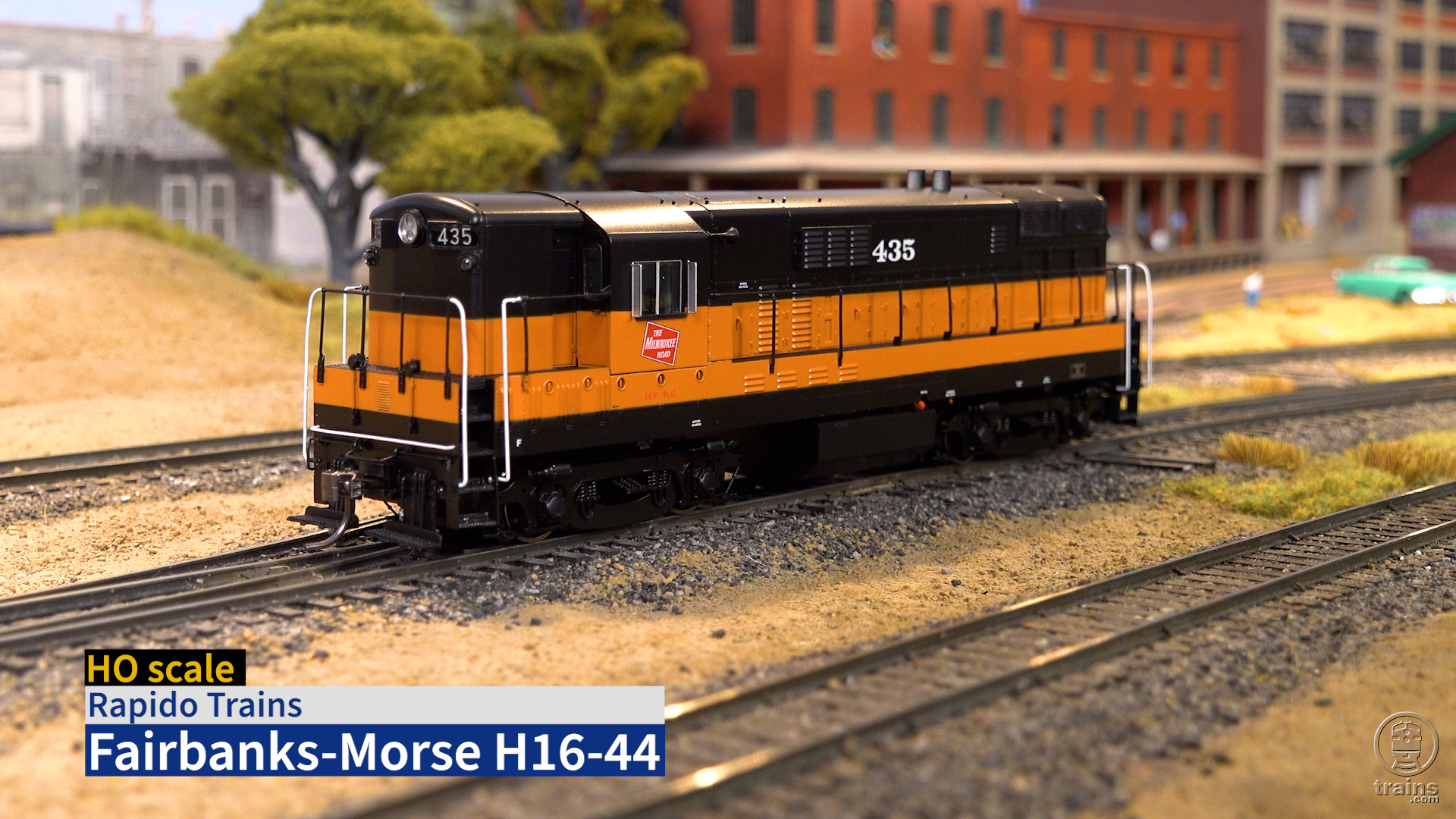
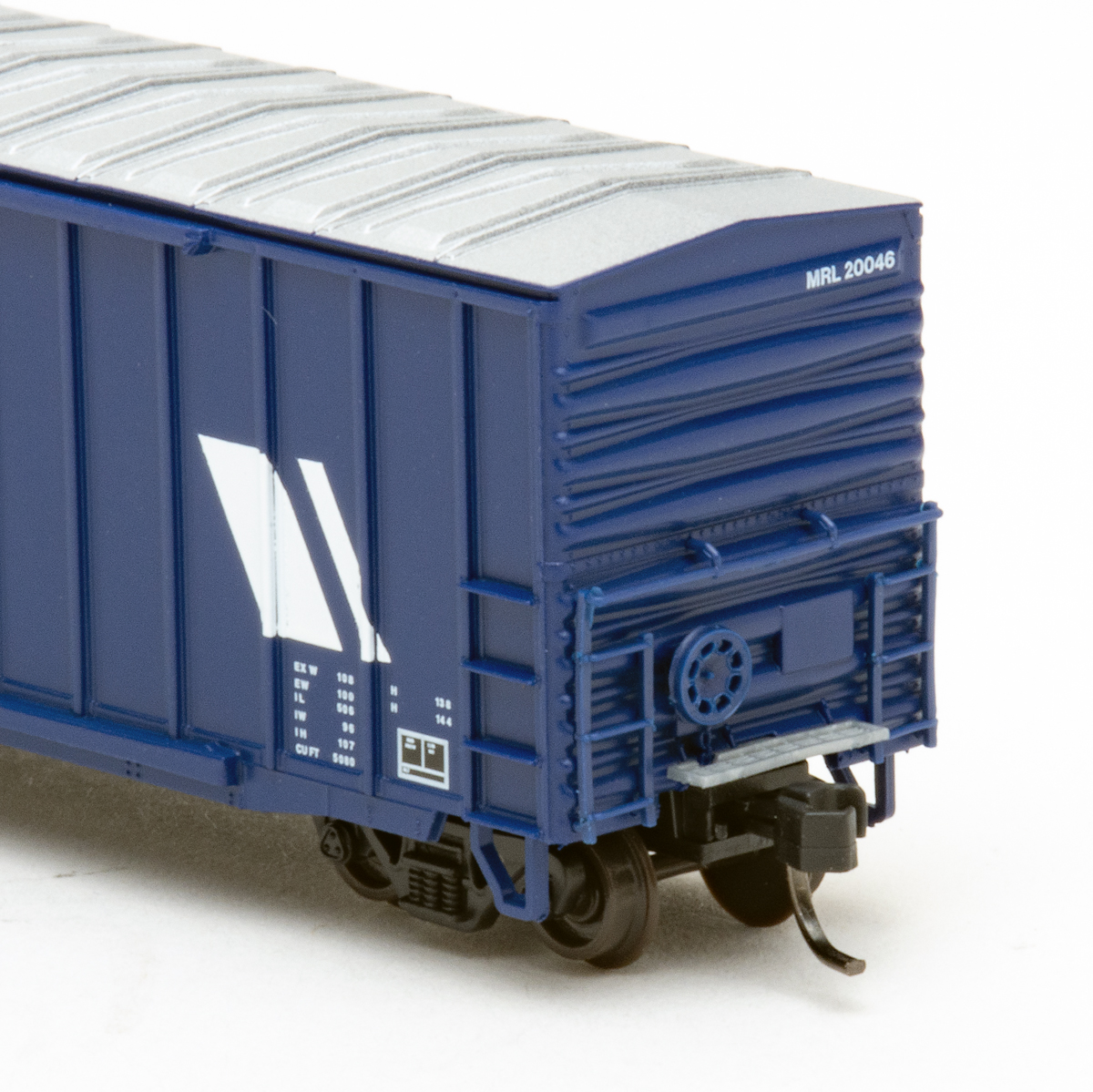




A perfect illustration of why government is not the answer to high speed rail and many other things. Self-serving politicians will very rarely choose the best options, whereas private enterprises, driven by the need to serve their customers in a cost-effective manner, will. As soon as CAHSR was first announced, oh so many years ago, it didn’t require clairvoyance to know this is exactly how it would end up. Time to minimize losses by shutting down this 3-ring circus.
We’re already behind the rest of the World by 50+ years. Just build the thing and build more lines.
If there was truly a “need” for this, wouldn’t Brightline or another operator have already done this?
Actually there was some effort made at the beginning to find some private investors but absolutely no one was interested as the project makes absolutely no economic sense (except as a payoff to the labor unions). The initial proposal had fares on the Moonbeam Rocket (Governor Brown Jr.) higher than air fares. Not only is a plane trip shorter but there are multiple airports in the Bay Area and Southern California so a plane gets a traveler much closer to his ultimate destination. A ‘mythical’ HSR traveler arriving in LA would still have another hour to spend getting to Orange County. People worry about global warming, another pandemic or a dinosaur-killer meteorite but the world will die of total government/elite idiocy long before any of those would happen (recent examples are the pandemic response where ‘follow the science’ was mostly not allowed, or the Fed/central banks zero interest rate/money printing which have basically destroyed the world’s finances with piles of debt that can’t be repaid).
Charles, technically the Big Dig was never completed, only the highway portion of it. The project originally included a tunnel under the Charles River connecting North and South Stations. When the costs spiraled out of control, that portion was scuttled.
Well, that was an idea, not sure it ever got as far as being an actual proposal.
There already is a connection between the south side trains and the north side trains — the MBTA orange line subway serves Back Bay Station on the south side and North Station on the North Side. Not all south side trains call at Back Bay. All south side Amtrak and most south side MBTA trains do call at Back Bay. The MBTA Old Colony trains do not and the MBTA Fairmount Line do not.
A train tunnel connecting South Station and North Station was never a viable idea. There’s just too much in the way, including the subways. Plus the inconvenient fact that both rail stations, South and North, would be a dig out and start over.
As the Rolling Stones sang, “You can’t always get what you want.” If you gave me $30 Billion dollars I’d not know where to begin. But I might suggest other ways to spend it, such as a start-over on the MBTA Green Line – D. Built on the cheap after the Korean War.
One of the things CalMatters could have made more clear in their excellent article is the tension between northern and southern California in state government. The center of political power in the state shifts around from time to time. Of late the executive power (Brown, Newsom) has NorCal roots, but Speaker Rendon is the latest in a series of legislative leaders from south of the Tehachapis. The benefits of the HSR project seem particularly remote to politicians and constituents in Rendon’s end of the state (where, of course, more people live and more seats in the legislature represent).
In addition to the traditional NorCal versus SoCal rivalry, I believe Newsome is seen as supporting rural democrats versus the urban democrat leadership. None of the state’s legislative leadership comes from the San Joaquin Valley.
This project gives me a pain in my armpit. Article says people are upset there’s no completion. date. Folks, there’s NO START DATE Merced to Bay Area or Bakersfield to LA Basin. It might be another ten or fifteen years before a shovel is turned in say, Burbank.
Who did they think they would fool by starting with the easy segments (also the least relevant segments) in the Central Valley? They can’t even get that done.
I don’t give a gumdrop about California, haven’t been there in 27 years, have no plans to see the place ever again. What I’m quite rightly afraid of is that the oppobrium this project has self-generated will spill over to real projects in other states. All we need is that when we get closer to the Gateway or the Baltimore tunnels, people will say, Uh-Uh, Look at California! Thumbs down.
Charles, I think the CAHSR project is our version of Boston’s Big Dig. At least that was completed.
Why did they start in the Central Valley? Ray LaHood forced them to start with an “easier to build” starter section…in order to get the federal HSR funds. They should have used started on the Bakersfield to Los Angeles segment – the biggest passenger rail gap in CA – with the idea being that they would not be getting any more federal money and when completed run the Amtrak San Joaquins over it at up to 125 mph. This logical and best use of the funds would have incrementally built upon the state’s previous (1990’s) investments improving BNSF’s valley line and expanding San Joaquin frequencies. Instead we will have spent over $10 billion building a parallel R/W, which will not be used to highest potential use anytime soon.
And don’t even get me started on alignment! The shortest distance between the Bay Area and LA is along the west side of the San Joaquin Valley. Much of which could have used the median of state owned I-5. But no one lives over there. So, in order to get the voters to pass the bond issue in 2008, the HSRA proposed the alignment of political best fit, including promised station stops in Madera, Fresno, Hanford, Bakersfield and Lancaster. This is out of the way, and longer.
At this point to cut losses, and avoid abandoning the various viaducts, I support connecting it to the new ACE commuter services in Merced and run some Amtrak San Joaquins over it to the new Bakersfield station. You will see a second Amtrak train to Minneapolis before even this would be completed.
With all the fits and starts and bobbles and overruns, the Big Dig has long since been completed and open to massive amounts of traffic. MassDOT didn’t shy away from the toughest parts of the project, which was all of it. For example, successfully building the I-90 Ted Williams tunnel through what was essential a massive garbage dump – slash – cesspool, with the most unstable geotech conditions imaginable.
If MassDOT had built ten miles of highway on flat land on Cape Cod, connecting to nothing on either end, and called it “The Big Dig” that would have been the equivalent of CalHSR. Then the Commonwealth could have pointed to a map of the falling-down 1950s-era John F. Fitzgerald Expressway, in Downtown Boston, and said, that’s our next project! Completion date 2020, or 2030, or 2070. Or more likely, never.
No, I’d not call the Big Dig anywhere near the failure as CalHSR. Yes it had its problems, and BTW we learned from them. I myself in my own career was put through procedures that were the direct result of the Big Dig’s flup-ups.
I have a better solution, and source for continuing money to fund construction until completed. Completely revamp the states budget first, return our welfare to when we had workfare(all able bodies individuals that refuse to work in the private sector and apply for welfare can do so, but you’re going to have to work for the different short staffed state agencies, like CalTrans keeping the freeways clean, the State park service maintaining all the state parks, the CHP manning all the weigh stations 24/7, etc., etc.,). Take all the saving you’ll end up generating from that and funneling it into CAHSR. Furthermore, as was originally proposed, take 75% of the fund from Cap & Trade and funnel it into CAHSR as well. Third, revise both the Tehachapi/Grapevine and Pacheco Pass routes to include more 3% surface routes…you can still maintain high speed with up to 4% grades if they wanted to go with ICE4 trains(from Siemens that’s what they’re designed for and what they do in Germany). Also, as for the land acquisitions, offer fare market value, if the owner refuses, eminent domain the property then…and start giving out contracts for utility relocation with deadlines and penalties if not completed by said deadlines…you’d be amazed at how much can get done on time when it’s going to cost a company money out of their pockets.
“The idea that you would spend all your money on a train that doesn’t connect to anything and just hope that you’re going to get more money, I find a really frightening business proposition.”
As for why the Central Valley was done first was on purpose. They knew it would cost over run and sometime down the road it would need more money to finish.
It made for great politics getting them to agree early, but it made for lousy planning.